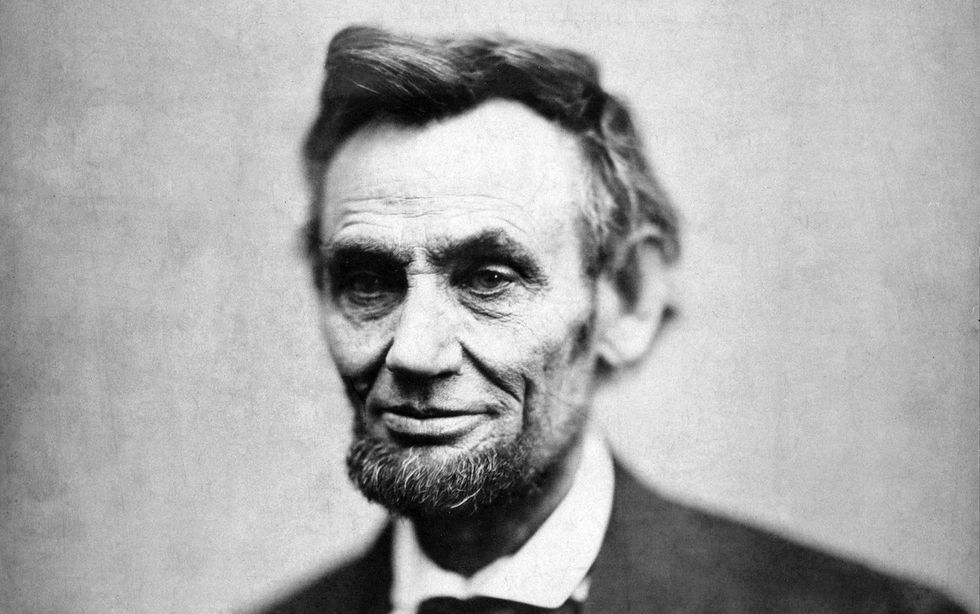History books have an unfortunate habit of glossing right over sexuality, assuming all of their major players to be straight. But that couldn't be further from the truth: non-straight sexuality isn't some modern fad. It was swept under the rug for hundreds of years, but it never ceased to be. Here's a look at just a few figures who were a little less straight than your textbooks would like you to believe.
1. Leonardo Da Vinci
Da Vinci was rather famous in Florence for his relationships with his students, having been arrested for sodomy twice (even though same-sex affairs were often overlooked by the Florentine authorities). Perhaps most notable of these was Gian Giacomo Caprotti, nicknamed “Salai” -- meaning “Devil” -- by Da Vinci. Salai lived up to his nickname: he was a cheat and a thief, and Da Vinci had little reason not to send him packing save his personal connection with the young man. He spent nearly twenty years with Da Vinci and appeared as one of Da Vinci’s most frequent drawing subjects, with some art historians arguing that the “Mona Lisa” is, in fact, a composite of of Salai and a Florentine woman.
Da Vinci never showed much interest in women, either, even going so far as to proclaim his disgust of male-female intercourse in his notebooks. He did, however, keep himself surrounded by male assistants -- universally young and beautiful.
2. Eleanor Roosevelt
Despite being most immediately famous as Franklin Roosevelt’s wife, Eleanor’s relationship with her husband appeared to be a purely political alliance, with neither showing much romantic interest in the other. Instead, she preferred the company of a tight circle of female friends, a group that included several lesbian couples. She grew particularly close with Lorena Hickok after spending quite a bit of time with her in New York. The two exchanged nearly 4,000 letters, often permeated with romantic under(and over)tones, like the frequent exchange of the phrase “je t’aime et je t’adore” -- translated to mean “I love you and I adore you.”
3. William Shakespeare
Unbeknownst to many casual readers, several of Shakespeare’s most famous sonnets, including Sonnet 18 (beginning with “Shall I compare thee to a summer’s day…”) were addressed to men. They were likely published without his approval and contain quite a bit of homoerotic subtext, often expressed through puns (as in Sonnet 52: “So is the time that keeps you as my chest, Or as the wardrobe which the robe doth hide, To make some special instant special blest, By new unfolding his imprisoned pride.” [“Pride” was an Elizabethan euphemism for an erect penis]). One commends the male subject to sleep with women, but give him his undying love.
4. Abraham Lincoln
Arguably the most nebulous on this list, Lincoln’s sexuality has long been debated by biographers and historians. As a young man, Lincoln frequently shared a bed with male colleagues -- not surprising, given the time period and his lack of wealth. This trend, however, allegedly continued even after he achieved wealth and renown, as he periodically shared a bed with Captain David Derickson when his wife (with whom his relationship was chilly at best) was away, with some reports of Derickson wearing Lincoln’s nightshirt.
Lincoln’s sexuality was really brought to the forefront when several letters -- albeit of stipulated authenticity -- detailing a sexual relationship between Lincoln and Joshua Speed were found under the floorboards of an old store they shared. However, an unambiguous correspondence between Lincoln and Speed shares many of the same affectionate undertones.
5. Virginia Woolf
Woolf’s affair with Vita Sackville-West is, at this point, rather famous. She first confessed to her sister, Vanessa Bell -- who was, for the time, quite accepting, expressing curiosity over rejection. She and Sackville-West kept up a written correspondence, with one letter even asking Sackville-West to “throw [her] man” and join her instead, and later readings of her diary revealed expressly romantic feelings toward Sackville-West.




 Energetic dance performance under the spotlight.
Energetic dance performance under the spotlight. Taylor Swift in a purple coat, captivating the crowd on stage.
Taylor Swift in a purple coat, captivating the crowd on stage. Taylor Swift shines on stage in a sparkling outfit and boots.
Taylor Swift shines on stage in a sparkling outfit and boots. Taylor Swift and Phoebe Bridgers sharing a joyful duet on stage.
Taylor Swift and Phoebe Bridgers sharing a joyful duet on stage.













